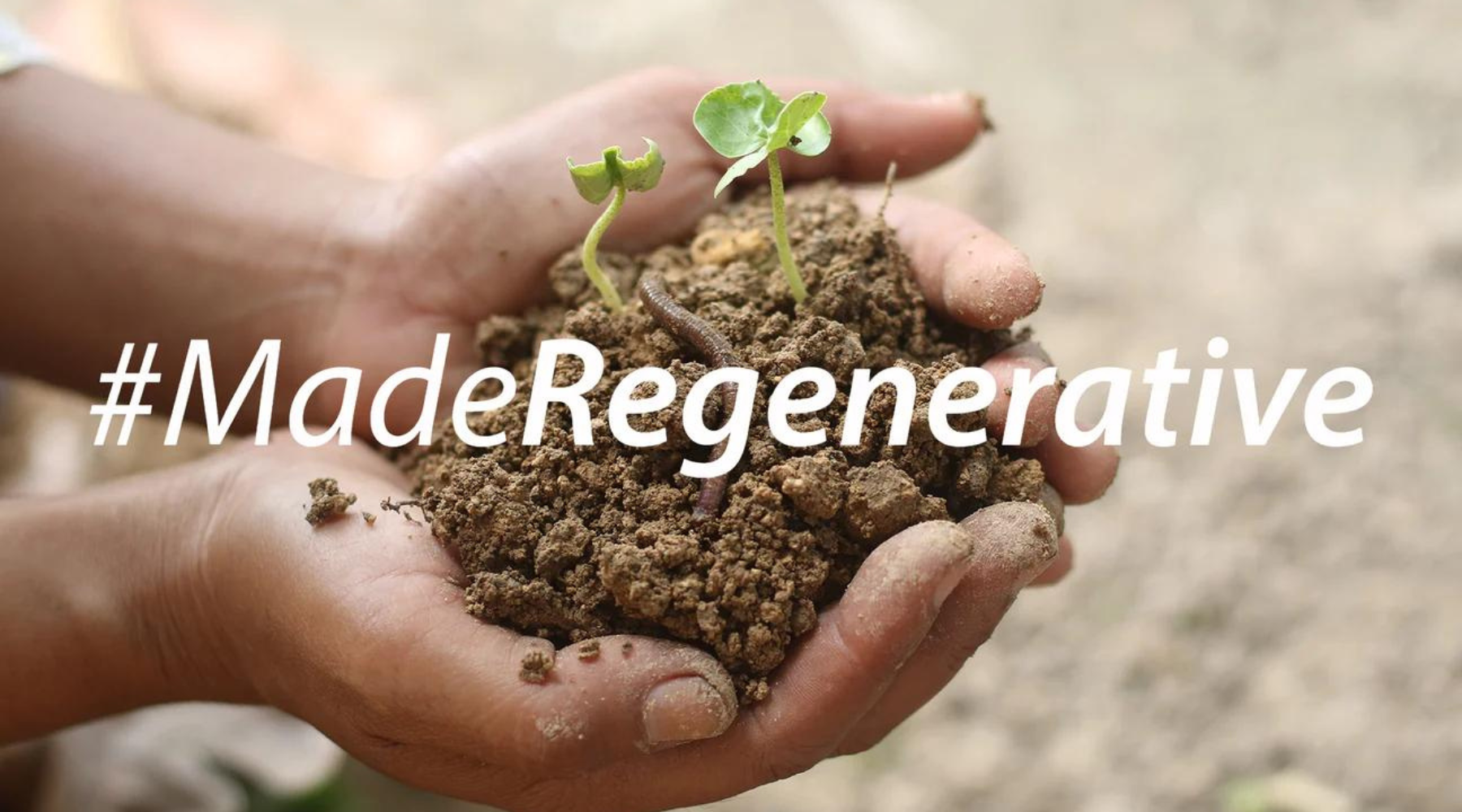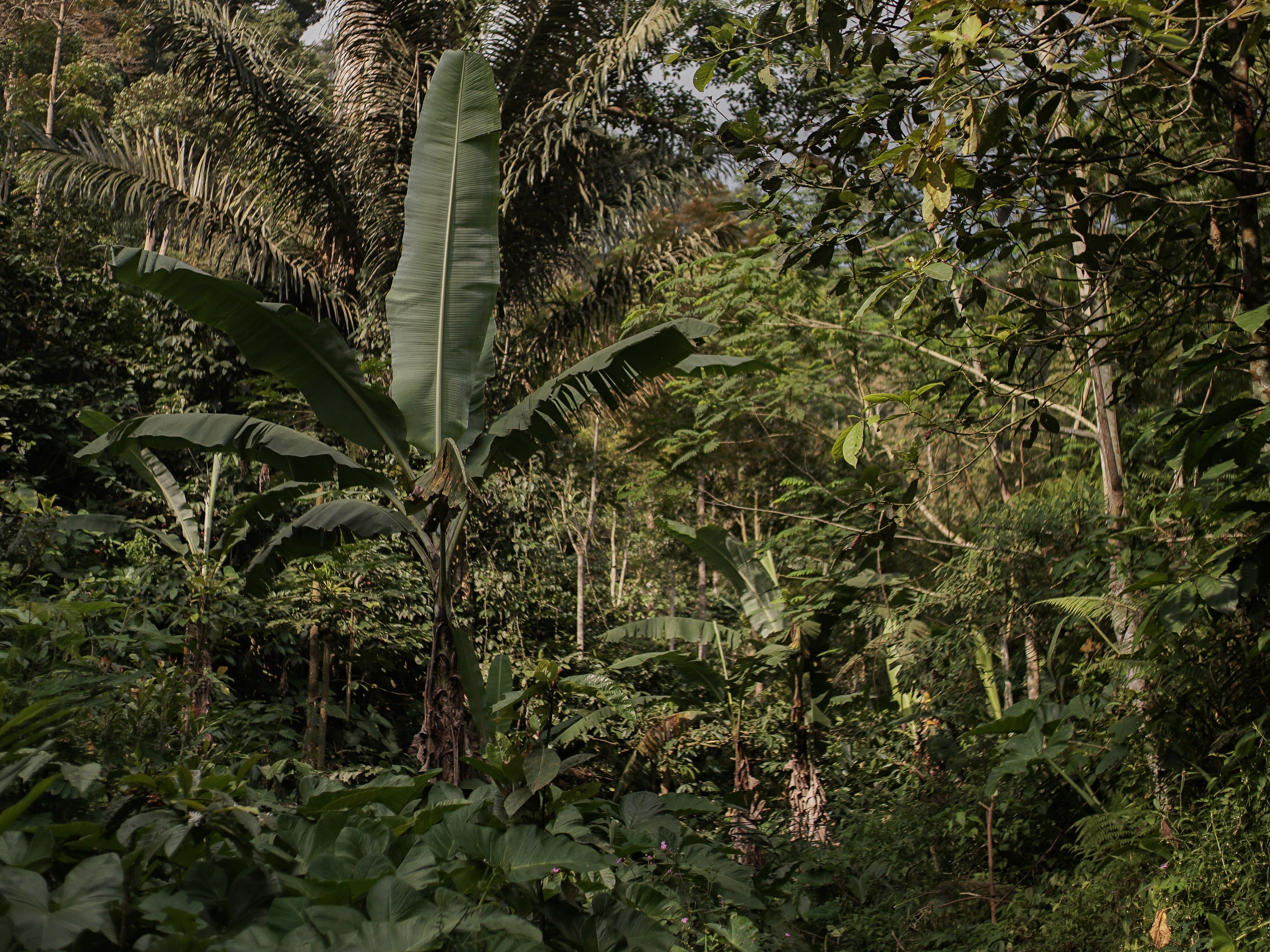
What does salt, clove and a cow have to do with your clothes? Well, as it turns out quite a lot. Because these are just a few of the basic ingredients we use to grow your clothes on our farms.
Yes, that’s right! We’re now growing our own cotton and natural dyes. In a way that’s free of chemicals, uses no irrigation and – get this – actually fights climate change!
How on Earth do we do that? One big new word: Regenerative Agriculture! A simple set of techniques that restores soil health, makes smallholder farmers more resilient against climate change and yes – binds a lot of carbon (the C in CO2) from the atmosphere.
I’ll tell you more in just a bit. But for now you probably have one big question:
Why should I care how my clothes were grown?

This may come as a surprise, but your clothes started on a farm somewhere.
The problem: The way cotton is grown is hurting both people and the planet. Monoculture and excessive use of chemicals have depleted the soil and poisoned the ground water, threatening the ability of future generations to feed themselves. Meanwhile, greenhouse gases from conventional agriculture amount to 35% of global emissions.
And probably you’ve heard of cases of exploitation and forced labor rampant in the cotton industry.
The good news: The solution to these issues is surprisingly simple! Cotton can be grown in a way that fights climate change AND allows smallholder farmers to earn a better income. It turns out, our farmers’ grandmamas figured it out a long time ago.
What is regenerative agriculture?
Disclaimer: Don't worry if you hate Science. Science makes me sleep too, that’s why I chose Economics, but I promise this is cool.
Regenerative agriculture is all about soil health. Because healthy soil is not only key to happy small holder farmers. It’s essential to life as we know it (aka food on the table).
This process restores the balance between soil and the atmosphere. What’s wrong with that balance, you may wonder? One word: carbon (the C in CO2).

Conventional agriculture methods like deep tilling, mono-cropping, and pesticides lead to stripped, depleted soil, which can’t draw down carbon or support much life.
Because of the way we humans do things right now, carbon levels in the soil have depleted and increased dramatically in the atmosphere – creating all kinds of problems. The soil actually needs more of it (because carbon helps soil store water and actually grow the food we eat), while the atmosphere has roughly 109 billion tons too much, causing global warming, rising sea levels, extreme weather events, flooding and more.
Through regenerative agriculture we take that excess carbon out of the atmosphere and put it back into the soil – regenerating it and allowing it to sustain life again! It’s a process called carbon sequestration, is 100% natural and been nature’s way for managing carbon for eons (more on the exact process at the bottom if you’re interested).
How we’re doing it
Since 2020, we’ve been working to help women farmers transition from conventional to regenerative farming. When we started, the land was dry and chemically-damaged. But now, a new hope is growing throughout the whole community.
Rather than using pesticides and synthetic fertilizers, we’ve created a small, forest like ecosystem. Yes, that’s right. By planting a diverse mix of plants around the cotton crops, we’re mimicing an abundant forest ecosystem, improving soil quality and reducing pests naturally.
The result is increased revenue for small-holder farmers while creating long lasting benefits for the planet.

By planting a variety of different plants that support each other and avoiding tilling we restore the soils ability to absorb carbon and hold up to 25% more water. Out pesticides: A mix of cloth, salt and water. Our Fertilizer? Cows and their…, well, you know.

Ibu Kasmini’s story: Small holder farmers against climate change
Whenever you hear about climate change, somehow you always imagine some serious high tech machines that requires some high level coordination and little individual power. For me, what makes reg ag especially exciting is that it allows women like Ibu Kusmini to lead the journey.
See, this isn’t some high tech solution. To her it’s going back to the way her great-grandfathers used to farm. The way that was abandoned as more chemical companies sell pesticides to them and they switched to mono culture. And we can do it in a way that also increases Ibu Kusmini's income.
From land devoid of life to a buzzling little mini ecosystem. My nerdy self couldn’t be more excited!


What’s next?
Ibu Kasmini’s farm is only the beginning. See, there are over 500mn smallholder farmers globally. Imagine if we can use this as a pilot to inspire them to join in this revolution. The impact could be massive.
The truth is, we can stop global warming. But we can't do it alone.
Will you join us?
Your nerd who cares,
D
PS: For the Nerds - in case you were wondering how soil health can reduce carbon levels in the atmosphere – read on:
Maybe you remember photosynthesis from high school? Plants turn CO2 into sugars – with the help of sunshine and a bit of water. The oxygen you and I are breathing is a “waste product” of this process. Those sugars are then drawn into the soil and feeds nearby bacteria and fungi.
Those microorganisms, in turn, transform soil minerals into nutrients that benefit the plants. They also convert sugars into organic matter that can trap carbon for up to centuries.
Modern day agriculture has lead to huge areas of barren land that can no longer effectively absorb carbon. The healthier the soil and the more diverse the plantation, the smoother the process. And hence the more CO2 is bound. At the same time, more carbon in the soil actually makes the soil healthier. It’s a positive feedback loop or the opposite of a vicious cycle.
See? Nerds r cool.





